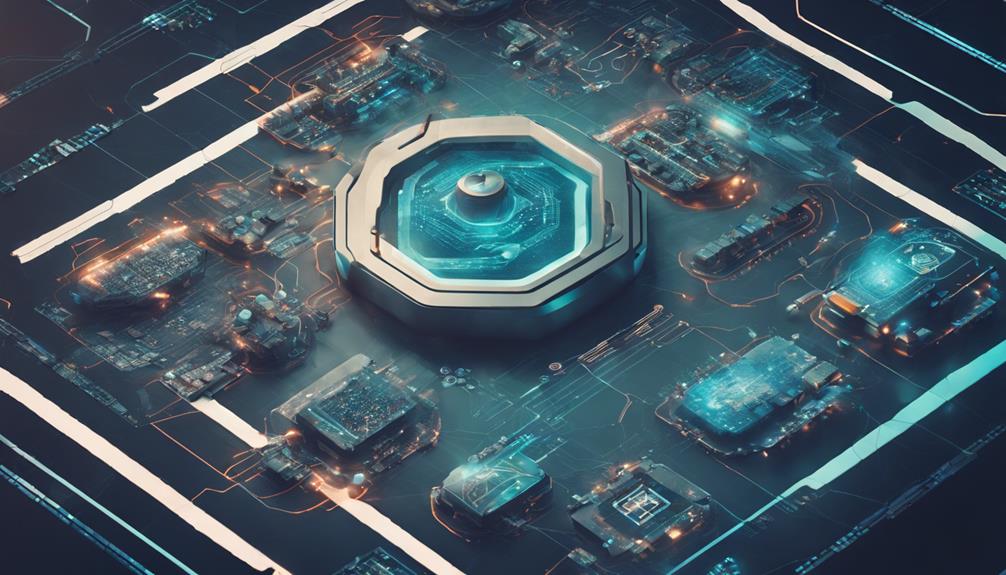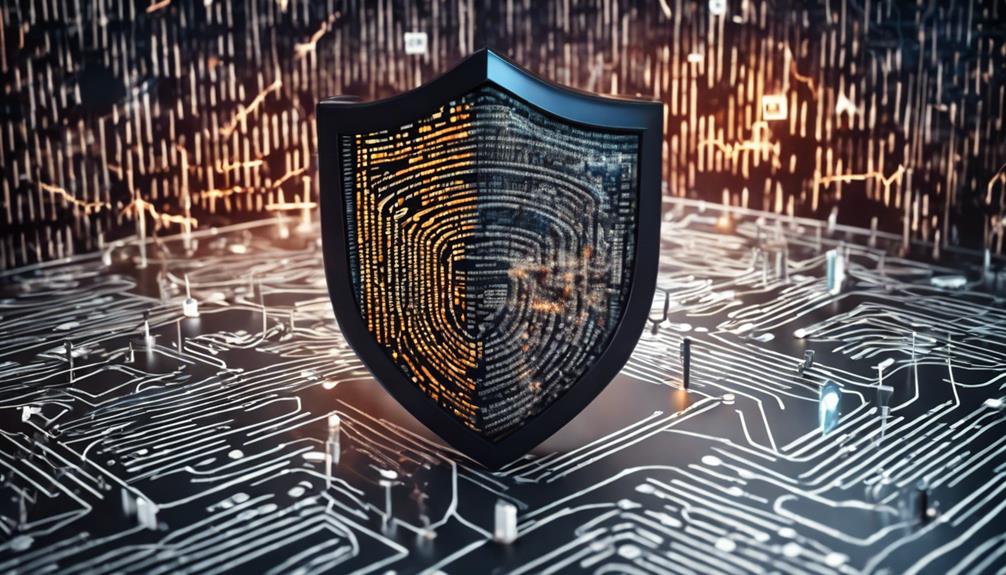Cybersecurity and Generative AI collaborate to revolutionize threat detection and enhance security measures. Generative AI excels in pattern recognition, elevating cybersecurity strategies with proactive defense measures. Through realistic threat simulations, it trains for improved preparedness against threats. AI swiftly analyzes vast data in real-time, boosting accuracy in threat detection and reducing response time. Customized AI solutions further tailor security measures for robust protection. This dynamic duo merges innovation and efficiency to fortify the digital landscape against evolving cyber threats, offering a glimpse into the future of cybersecurity resilience.
Key Takeaways
- Generative AI enhances threat detection accuracy.
- AI-driven pattern recognition bolsters cybersecurity.
- Realistic threat simulations improve security training.
- AI automates incident response tasks.
- Adaptive defense strategies benefit from AI technologies.
The Rise of Generative AI in Cybersecurity
Elevating the capabilities of cybersecurity strategies, the rise of Generative AI has ushered in a new era of proactive defense measures against evolving cyber threats. This innovative technology is transforming the landscape of cybersecurity by leveraging artificial intelligence to enhance threat detection and response mechanisms. Generative AI excels in pattern recognition, enabling it to detect anomalies and potential cyber threats within intricate data sets, providing a critical advantage in safeguarding sensitive information.
Moreover, its ability to create realistic threat simulations for training and testing security measures equips organizations with the tools needed to stay ahead of malicious actors. One of the key strengths of Generative AI in cybersecurity is its capacity to tailor solutions to specific needs, offering customized measures for advanced threat prevention. By infusing intelligence and adaptability into cybersecurity processes, Generative AI fortifies defense systems, enhancing overall resilience against evolving threats.
As organizations navigate an increasingly complex digital landscape, the integration of Generative AI is imperative for staying one step ahead of cyber adversaries.
Enhancing Threat Detection With AI
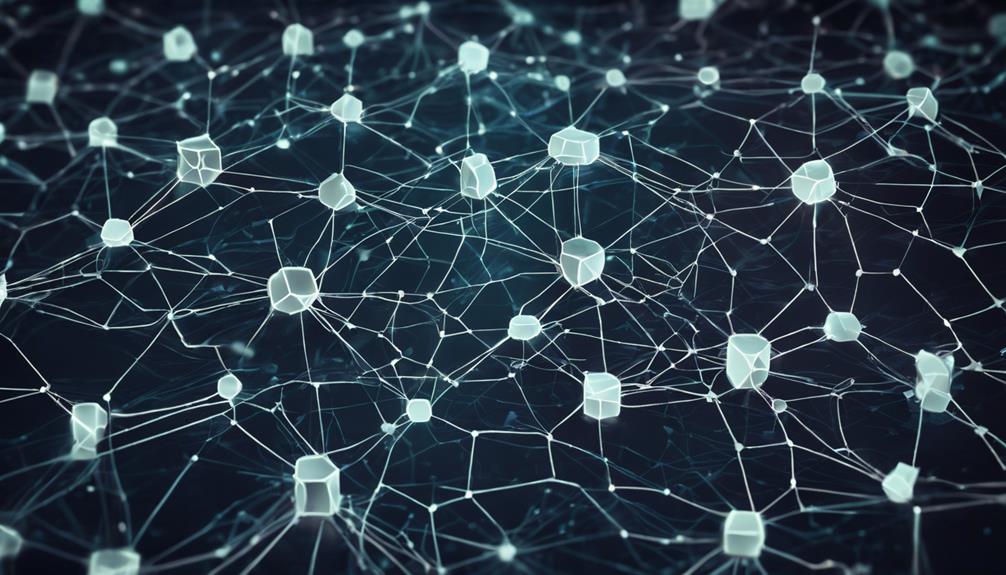
Generative AI plays a vital role in enhancing threat detection capabilities in cybersecurity. By leveraging its pattern recognition skills, AI can identify irregularities in network activities that may signify potential security risks.
Additionally, AI's ability to customize solutions tailored to specific cybersecurity requirements empowers organizations to fortify their defenses and proactively combat evolving cyber threats.
Ai-Driven Threat Detection
How does AI-driven threat detection revolutionize cybersecurity practices by greatly enhancing threat detection accuracy and efficiency?
AI-driven threat detection holds immense potential in transforming the landscape of cybersecurity by leveraging advanced algorithms to bolster threat detection mechanisms.
Here's how this technology is reshaping the cybersecurity domain:
- Enhanced Accuracy: AI-driven threat detection greatly boosts detection accuracy, surpassing traditional methods by up to 99%.
- Real-Time Analysis: Generative AI can swiftly analyze vast datasets in real-time, facilitating prompt identification of potential threats.
- Pattern Recognition: AI excels in recognizing patterns and anomalies that might elude human analysts, fortifying threat detection capabilities.
- Reduced Response Time: By swiftly pinpointing threats, AI-driven detection systems slash response times, bolstering overall security preparedness.
The integration of AI in threat detection processes not only streamlines operations but also nurtures a proactive cybersecurity approach, fostering a more resilient defense against evolving cyber threats.
Improved Security Measures
One key aspect of bolstering security measures in cybersecurity involves leveraging AI to enhance threat detection capabilities. AI's ability to analyze vast amounts of data enables it to identify patterns and anomalies that may indicate potential security breaches. By incorporating AI-driven pattern recognition, organizations can proactively detect threats before they escalate, strengthening their overall security posture.
Moreover, essential AI plays a critical role in improving security measures by creating realistic threat simulations. These simulations allow organizations to test their defenses against various cyber threats, enabling them to fine-tune their security protocols for better protection.
Additionally, AI-generated educational content can enhance the training of security professionals, equipping them with the knowledge and skills needed to effectively respond to evolving threats.
Customized AI solutions further tailor security measures to specific organizational requirements, providing a tailored approach to threat detection and mitigation. By harnessing AI's intelligence and adaptability, organizations can elevate their security processes with advanced threat detection capabilities, reinforcing their defense mechanisms against cyber threats.
Leveraging AI for Incident Response

Utilizing AI for incident response empowers organizations to streamline their cybersecurity efforts by automating processes and enhancing threat detection capabilities. When leveraging AI technology for incident response, organizations can benefit in various ways:
- Automation of Processes: AI can automate routine tasks in incident response, allowing security teams to focus on more complex issues.
- Efficient Threat Detection: AI-powered systems can analyze vast amounts of data swiftly, identifying potential threats and vulnerabilities in real-time.
- Proactive Defense: By leveraging AI, organizations can proactively defend against cyber threats, reducing the risk of successful attacks.
- Enhanced Security Posture: AI algorithms can recognize patterns and anomalies, strengthening security postures and improving overall resilience to evolving threats.
Integrating AI into incident response workflows enables organizations to respond effectively to security incidents, adapt to dynamic cyber threats, and enhance their overall cybersecurity posture.
Innovations in Cybersecurity Defense
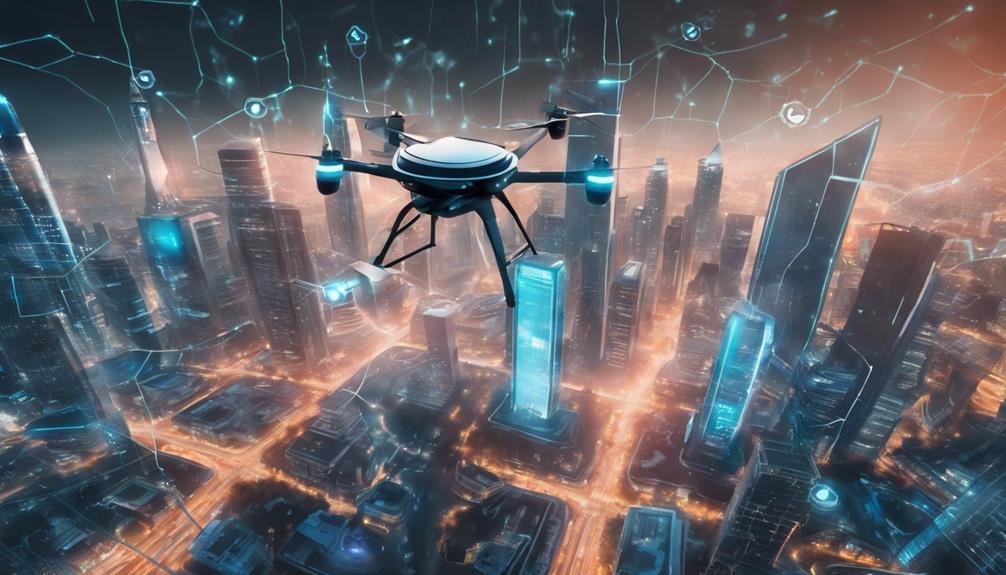
Integrating generative AI into cybersecurity defense strategies brings a new level of sophistication and adaptability to safeguarding digital assets against evolving threats. Artificial Intelligence (AI) plays an essential role in enhancing cybersecurity measures by enabling the creation of realistic threat simulations for testing defense mechanisms effectively.
Additionally, generative AI's capability to recognize patterns and anomalies within vast datasets enhances threat detection processes, making cybersecurity defense more robust and proactive.
Another key benefit of utilizing generative AI in cybersecurity is the ability to develop tailored educational content that boosts security awareness among users and organizations. This personalized approach contributes greatly to strengthening overall defense mechanisms and mitigating risks effectively.
Moreover, generative AI's intelligence and adaptability empower the creation of customized solutions that cater to specific security needs, thereby enhancing the overall cybersecurity posture of entities.
In essence, the innovations brought forth by generative AI in cybersecurity defense not only streamline processes but also elevate the efficacy of threat response strategies, making digital environments more resilient against sophisticated cyber threats.
Securing Data With Generative AI
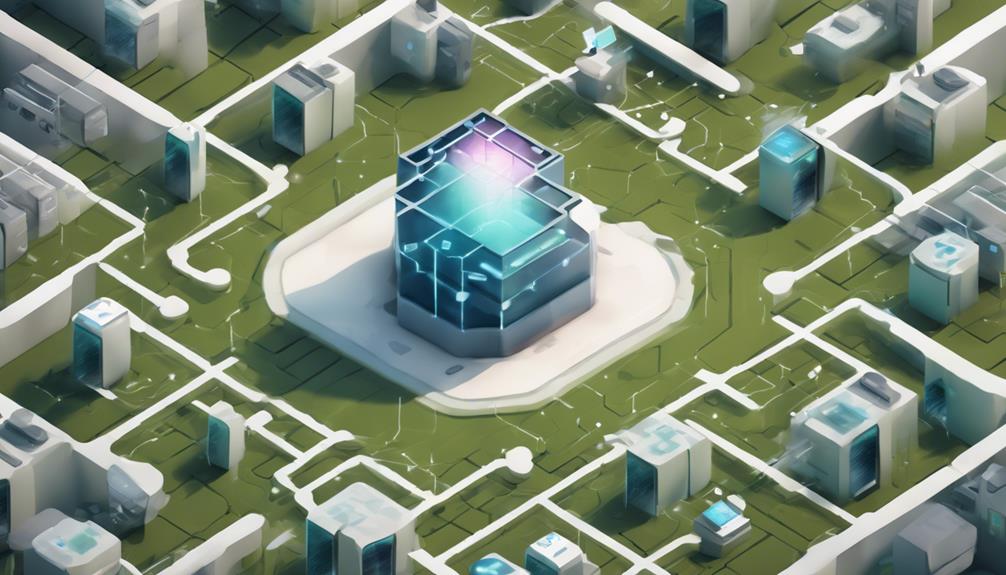
Enhancing data security through the application of generative AI technology provides a robust defense mechanism against evolving cyber threats. Generative AI offers unique capabilities that can revolutionize data protection strategies:
- Realistic Threat Simulations: Generative AI can create lifelike simulations to assess the resilience of cybersecurity systems effectively.
- Pattern Recognition: This AI excels in identifying patterns and anomalies within data, enabling early detection of potential threats.
- Educational Content Development: Generative AI can generate tailored educational materials to enhance cybersecurity training and awareness initiatives.
- Customized Solutions: Tailored solutions crafted using generative AI can address specific cybersecurity needs with precision and efficiency.
The adaptability and intelligence of generative AI make it a valuable asset in fortifying data security measures. By leveraging the power of AI technology, organizations can proactively defend against cyber threats and safeguard sensitive information effectively.
AI-Powered Vulnerability Management

Generative AI's role in fortifying data security extends to AI-powered vulnerability management, which leverages machine learning algorithms to identify and prioritize security risks in real-time. By automating the process of scanning, detecting, and patching vulnerabilities across an organization's systems, AI in vulnerability management enhances threat identification accuracy and reduces response time to potential cyber attacks. This technology enables organizations to stay ahead of evolving cyber threats by continuously monitoring and analyzing their digital infrastructure. AI-powered vulnerability management solutions offer proactive defense measures to mitigate risks and strengthen overall cybersecurity posture.
Artificial Intelligence (AI) plays an essential role in transforming how vulnerabilities are managed within organizations, providing a proactive approach to cybersecurity. With its ability to swiftly detect and prioritize security risks, AI empowers businesses to fortify their defense mechanisms efficiently. Embracing AI-powered vulnerability management not only enhances security protocols but also ensures that organizations are well-equipped to combat the ever-evolving landscape of cyber threats.
Advantages of AI in Cyber Defense

AI plays a pivotal role in enhancing cyber defense capabilities through automated threat detection, real-time incident response, and adaptive defense strategies.
By leveraging AI technology, organizations can greatly reduce response times to cyber threats while improving overall security analytics and threat intelligence.
These advantages empower cybersecurity teams to identify patterns in attacks, predict future threats, and bolster their defense mechanisms effectively.
AI for Threat Detection
Utilizing advanced artificial intelligence technology in cybersecurity systems provides a strategic advantage in threat detection and defense mechanisms. AI enhances threat detection by automating processes, reducing human error, and improving response times.
Here are some key advantages of AI in cyber defense:
- Complex Pattern Recognition: AI in cybersecurity helps identify intricate patterns in cyber attacks that traditional methods might overlook.
- Real-Time Threat Intelligence: AI-powered systems offer real-time threat intelligence, enabling proactive defense against emerging threats.
- Incident Response Capabilities: AI assists in incident response by swiftly and accurately analyzing vast amounts of data.
- Enhanced Security Posture: AI applications in cybersecurity, like malware detection and phishing protection, considerably strengthen overall security posture.
Automated Incident Response
Implementing automated incident response mechanisms powered by advanced artificial intelligence technology revolutionizes cybersecurity defense strategies by drastically reducing response times to cyber threats. Automated incident response enhances security by swiftly detecting and mitigating threats, improving overall security posture. AI-driven incident response processes not only boost efficiency but also increase accuracy in threat detection and response. Real-time threat intelligence enabled by AI provides organizations with timely insights into emerging cyber threats, allowing for proactive defense strategies. Leveraging AI for automated incident response helps in identifying attack patterns, reinforcing robust security measures to combat evolving threats effectively.
| Advantages of AI in Automated Incident Response |
|---|
| 1. Drastically reduces response times to threats |
| 2. Enhances overall security posture |
| 3. Improves efficiency and accuracy in threat detection and response |
| 4. Provides real-time threat intelligence |
| 5. Identifies patterns in cyber attacks for proactive defense strategies |
Adaptive Defense Strategies
Incorporating generative AI technology into cybersecurity defense strategies enhances organizations' ability to adapt and respond to evolving cyber threats in real-time.
Adaptive defense strategies leverage AI for real-time threat detection and response, offering proactive defense capabilities that can detect threats before they escalate.
By enhancing security analytics, AI enables organizations to identify and respond to threats more effectively, ultimately reducing response time to cyber threats and improving overall security posture.
Additionally, the use of AI in cyber defense helps in identifying patterns in cyber attacks, enhancing threat intelligence capabilities and allowing organizations to stay ahead of potential threats.
The combination of generative AI and adaptive defense strategies equips organizations with the tools needed to proactively defend against a wide range of cyber threats with agility and precision.
Future Trends in AI Security Integration
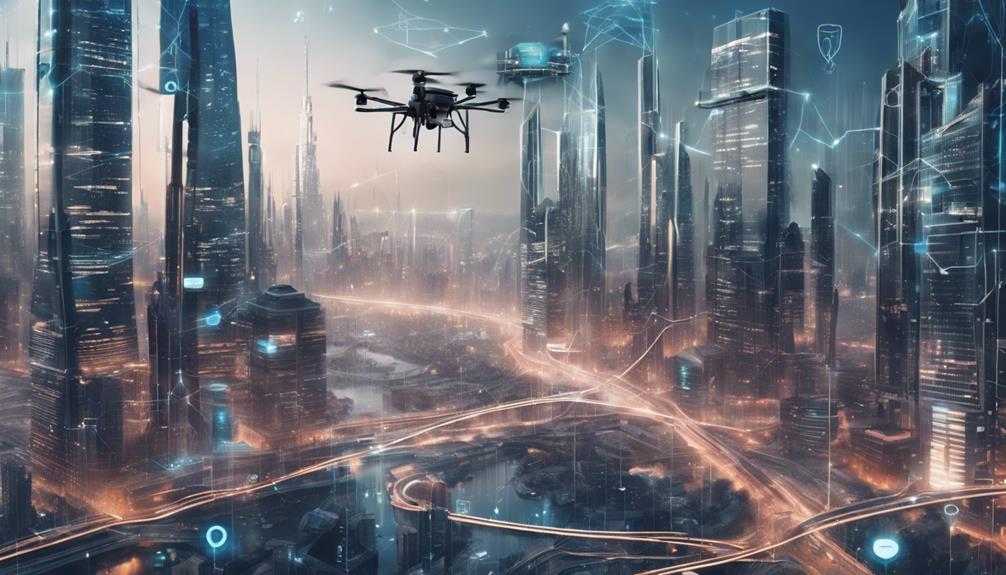
The forthcoming developments in AI security integration are poised to revolutionize the landscape of cybersecurity, particularly in the domain of predictive defense mechanisms and proactive threat mitigation strategies. Artificial Intelligence (AI) will play a pivotal role in shaping future trends by enhancing threat hunting capabilities and providing predictive cyber threat intelligence.
Autonomous security systems leveraging AI will be at the forefront of combating sophisticated cyber attacks, adapting to evolving AI technologies effectively countering emerging threats. The integration of AI in cybersecurity will not only strengthen real-time threat intelligence but also enhance response capabilities through predictive analytics and autonomous defense mechanisms.
As organizations endeavor to stay ahead of cyber threats, the convergence of AI and security will enable a more proactive approach to cybersecurity, heralding a new era of defense strategies that anticipate and neutralize threats before they materialize. Embracing these future trends in AI security integration will be essential for safeguarding digital assets and ensuring robust protection against evolving cyber risks.
Frequently Asked Questions
How Can Generative AI Be Used in Cybersecurity?
Generative AI in cybersecurity enhances threat detection by creating realistic simulations, recognizing patterns, and anomalies in data. It also develops educational content, tailors solutions, and enhances defense processes with intelligence and adaptability, addressing specific needs effectively.
Can I Combine AI and Cyber Security?
Can AI and cybersecurity be combined? Integrating AI into cybersecurity operations enhances threat detection, response, and overall security measures. The synergy between AI and cybersecurity leads to more efficient and effective protection against evolving cyber threats.
How Is AI Related to Cyber Security?
AI in cybersecurity leverages automation, real-time analytics, predictive capabilities, pattern recognition, and adaptive learning to enhance threat detection, response, and defense measures. Its role is vital in combating sophisticated cyber threats efficiently and proactively.
Will AI Automate Cybersecurity?
AI is revolutionizing cybersecurity by streamlining threat detection, response, and defense strategies. Through automation, AI greatly enhances incident response capabilities, predicts and prevents cyber attacks in real-time, and boosts efficiency in security analytics for proactive defense mechanisms.
Conclusion
To sum up, the integration of generative AI in cybersecurity has shown great promise in enhancing threat detection, incident response, and data security.
As advancements continue to be made in AI-powered vulnerability management and defense strategies, the future of cybersecurity looks bright.
By leveraging the power of AI technology, organizations can stay ahead of cyber threats and protect their valuable data and assets.
The dynamic duo of cybersecurity and generative AI is paving the way for a more secure digital landscape.




